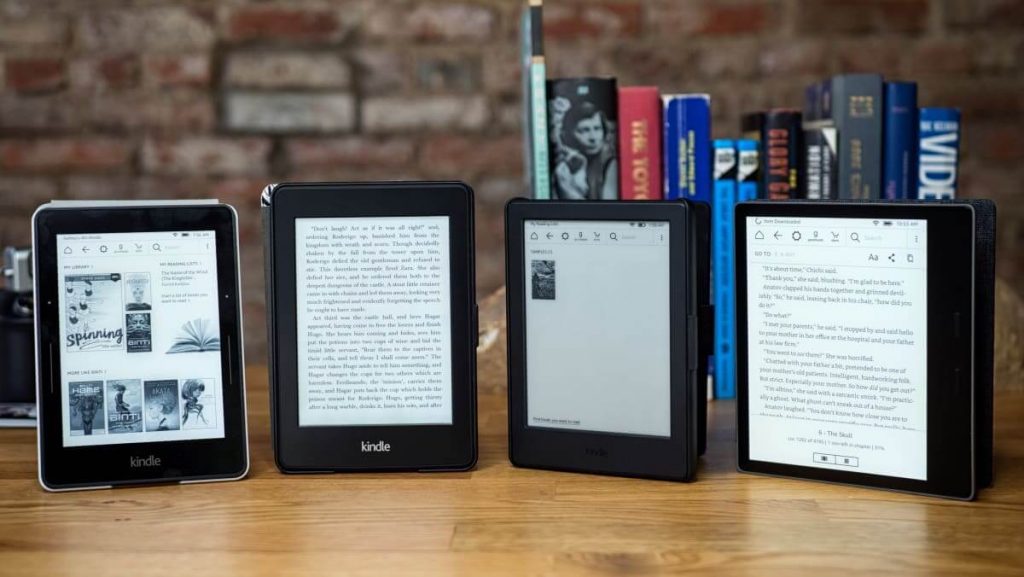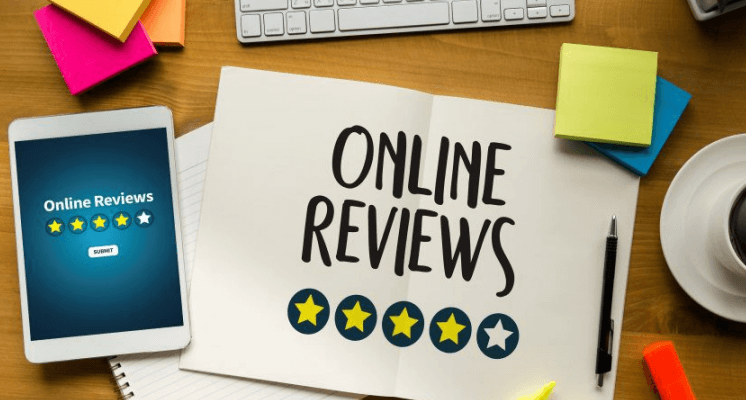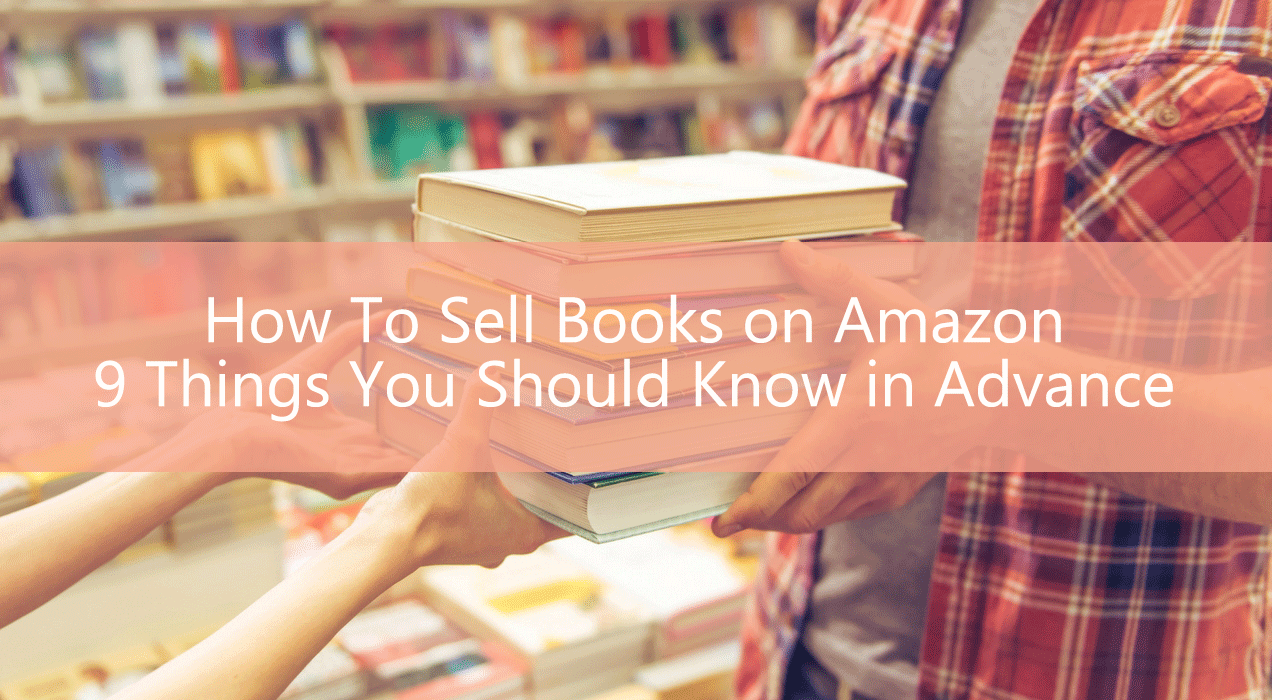Like the world’s biggest megastore, Amazon is home to some 52 million different books available at any given time.
The way we read books is constantly changing – a well as the traditional hardback and paperback options, readers can now choose to enjoy a good novel or non-fiction tome in e-reader or audio formats.
Amazon’s main book categories are:
- Books listed by a publisher
- Books listed by an online store
- Second-hand books listed by Amazon members
- Self-published books listed by the author
Before beginning to sell books on Amazon, there are a few things you should take into consideration:
Quick Guide:
- 1. What do I need in order to start selling books on Amazon?
- 2. Should I sell as a professional or individual?
- 3. Sell eBooks or printed books?
- 4. Should I sell used books or new ones?
- 5. Should I use FBA or FBM?
- 6. How do I fecide on a price?
- 7. How do I get paid?
- 8. How do I get my first order and review?
- 9. How do I provide customer service?
1. What do I need in order to start selling books on Amazon?
Before starting out as an Amazon bookseller, you need to make sure that you have access to the following:
- A reliable computer
- A credit or debit card
- A hand-phone in order to down the Amazon seller app
It’s also a good idea to arm yourself with some handy tools – below are some of our favorites:
- USB Barcode Scanner. A USB Barcode Scanner is essential for those who are planning to sell large volumes of books on Amazon. Available from around $20, This is a low-cost item that you’ll really appreciate having if you’ve ever had to spend time manually entering a large number of UPC codes into the system.
- Google Keyword planner. Google keyword planner is a great keyword tool which can help you find keywords that your customers are searching for related to your selling books. In that case, you can optimize your Amazon listing and drive more organic traffic.
- Keepa. The Keepa is a clever add on to the Chrome browse for comparing products and prices, which is a great way to help you pay attention to your competitors and price optimization.
- Inventory Lab . Inventory Lab is a great tool for helping you to get yourself organized as a bookseller. The onsite Stratify solution allows you, first and foremost, to research products in order to sourcebooks to sell. Stratify also features handy inventory tools as well as expense tracking and profit analysis to make sure that you can gauge how much money you’re actually making from selling books.
2. Should I sell as a professional or an individual?
The type of seller you decide to depends on how serious you are a seller and, how much volume you expect to be selling.
Below is an indication of the benefits and limitations of each of the two kinds of seller:
| Benefit | Individual | Professional |
| Monthly subscription fee | None | $39.99 |
| Amazon fee per item | $0.99 | None |
| Create new Amazon product pages | Yes | Yes |
| Inventory management tools | None | Yes |
| Order management tools | None | Yes |
| Amazon marketplace services | None | Yes |
| Amazon set shipping rates | Yes | None |
| Seller set shipping rates | None | Yes |
| Promotion services | None | Yes |
For Amazon sellers looking to sell only the odd item, the Individual seller option is best, however, for those expecting to sell high volumes or a large number of products, the professional option is a good investment.
3. Sell eBooks or printed books?

As previously mentioned, books are now available on Amazon in a number of different formats, including eBooks and print books in paperback and hardback.
Print books are the traditional format whereby physical books are created by a printing press and distributed to physical and online stores.
Print books involve a number of costs including printing, packaging and shipping.
Ebooks, or electronic books, are those which are uploaded to an online retailer’s site and, when purchased, are then downloaded to the customer’s electronic reading device.
These retail for a low cost due to the fact that there are no printing, packaging or shipping costs.
When deciding which format to sell on Amazon, there are a number of factors to take into consideration and, below, we list the pros and cons of each from a customer’s point of view:
Pros & Cons of Selling eBooks
Pros
- Extremely low cost to purchase due to the fact that there are no printing, shipping or packing costs.
- Once uploaded, there is no need for extra work such as packing and shipping by the seller.
- Can be sold at low cost making them attractive to a buyer.
Cons
- Low selling costs mean limited profits per sale.
- High availability means there are likely to be numerous sellers offering the same product.
- Limited selling options.
Pros & Cons of selling print books
Pros
- Higher potential for profit – particularly with rare or unusual books.
- Can be promoted as thoughtful gifts.
- More selling options including second hand.
Cons
- Higher purchase cost.
- Additional expense and work due to packaging and shipping.
- Susceptible to warping and damage during transport to customer.
When eBooks first arrived on the market, many thought that it was the death knell for traditional publishing. However, in the last few years, the tide has started to turn.
In 2017, the Wall Street Journal reported that eBooks had seen a drop in sales of around 17% whereas, in contrast, print books were up by about 5%.
As a seller, eBooks offer a quicker and simpler selling process, however, print books – particularly rare or collectible editions – can be extremely lucrative.
4. Should I sell used books or new ones?
Take a look at any book listing on Amazon and you’ll most likely see options to buy new or used.
Exactly as you would expect, new books are those purchased directly from the manufacturer or publisher and are items which have not been handled by a consumer.
Many Amazon sellers choose to sell used books which can be profitable, however, sellers must adhere to a strict set of rules and honesty when stating the condition of the book.
Amazon’s options for this are as follows:
Used – Like New:
This is the term used for a book which, although used, is in pristine condition and in the same condition as a new item.
Used – Very Good:
This description would be used for a book which has been read and handled but is still in great condition with no visible scratches, tears or pages missing.
Used – Good:
This term is appropriate for a book which may have been read a number of times resulting in slight wear and tear such as dog eared pages but still perfectly useable.
Used – Acceptable:
This would be considered the correct description for a book which, although still readable, is showing considerable wear and tear including scratches, ripped pages or hand-written notes.
5. Should I Use FBA or FBM?
When distributing books for sale on Amazon, there are two main fulfilment options: Amazon FBA vs. FBM. Which one should you choose?
Fulfilled by Merchant (FBM)
Fulfilled By Merchant is the process whereby, once a book is sold, you package it and ship it yourself from stock which you have already bought.
The advantage of FBM is that, although you still pay fees to Amazon for selling on its site, you avoid also paying fulfillment charges.
Fulfilled by Amazon (FBA)
This is a method whereby you choose to ship your product to an Amazon fulfillment center.
Once you make a sale, Amazon will then pick, pack, and ship the product to the customer for you.
The advantage of Amazon FBA is that you don’t have the hassle of shipping to the customer yourself, however, you do pay fees to Amazon for the privilege.
FBM vs FBA
| PROS | CONS | |
| FBM |
|
|
| FBA |
|
|
6. How Do I Decide On A Price?
When pricing a book on Amazon, there are a number of factors to consider for both eBooks and print books.
These factors can include:
Pricing on Print books
- The condition of the book.
- Whether the book is new or used.
- Whether the book is rare or collectible, such as a first edition.
Pricing on Print books and eBooks
- The author – if a book is written by a well-known author, it’s likely that it will fetch a higher price than that of an unknown.
- How many other sellers are offering the same item and, at what price.
- Your purchase cost plus any packing or shipping costs.
The object of selling on Amazon is to make a profit so you need to make sure that your selling price is higher than your buying and shipping costs.
Before setting your price, do some research (you can use a tool like Keepa mentioned earlier in this article) to find out how much your competitors are selling the same book in a similar condition for.
Less isn’t always more
When setting a price for an eBook, try the following exercise:
Start your book at around $4 and then reduce by $1.00 every three days until you reach the minimum allowed price of $0.99.
Wait another few days and then reverse the process until you reach $4.
By doing this, you can monitor the performance of the book at each price point to find the sweet spot.
7. How Do I Get Paid?
When you set up your Amazon seller account, you will need to input your personal details including valid bank account details.
Once a transaction on Amazon is complete, Amazon will transfer the money – minus its fees – to your bank account which can take up to five business days.
Please note that your bank statement may show different sources in addition to Amazon Payments Inc, depending on the transaction.
Amazon currently does not make payment to sellers via Paypal or similar.
8. How do I get my first order and review?

Getting that all-important first order is a great feeling – and you can help to make that happen by promoting your products on social media or through Amazon PPC advertising.
As great as making a sale is, in order to be a successful Amazon seller, you also need great reviews.
Unfortunately, not every Amazon book buyer leaves a review after purchase and, many new sellers find themselves frustrated by this.
Thankfully, there are some useful tools that can help you to bag those reviews.
AMZDiscover is a powerful search engine which can help you to find reviewers and new customers by giving you contact details of people who have bought and reviewed similar items. AMZDiscover costs $1 per reviewer.
Learn more about how to get a top Amazon reviewer email list and obtain product reviews.
9. How do I provide customer service?
As with any business, providing great customer service is the key to your success.
If a customer feels that they have received good service and a good product, they are likely to recommend you to friends and family.
Many Amazon sellers find it helpful to sign up to AMZFinder in order to keep in touch with customers.
From jut $20 per month, members can use AMZFinder to email customers, invite feedback and gain new customers.
Always make sure that you respond to customer questions and inquiries as quickly as possible and, should you receive a complaint, show the customer that it is important to you to resolve the situation for them.
Conclusion
When it comes to selling books on Amazon, there is a huge scope for success – with so many different books available, often a super-cheap price, statistics show that, for many regular book buyers, Amazon is the first port of call.
Do your research thoroughly in order to source books to sell and take a look at how many different sellers are already selling that item.
Be proactive when promoting your books – social media offers a whole wealth of potential customers with Facebook book-buying groups such as Book Club Novel Readers Amazon Kindle and Bookaholic Cafe.
Make sure that your customer service is second to none by responding to queries quickly and positively and you’ll soon be on your way to being a great Amazon bookseller.

Leave a Reply
You must be logged in to post a comment.